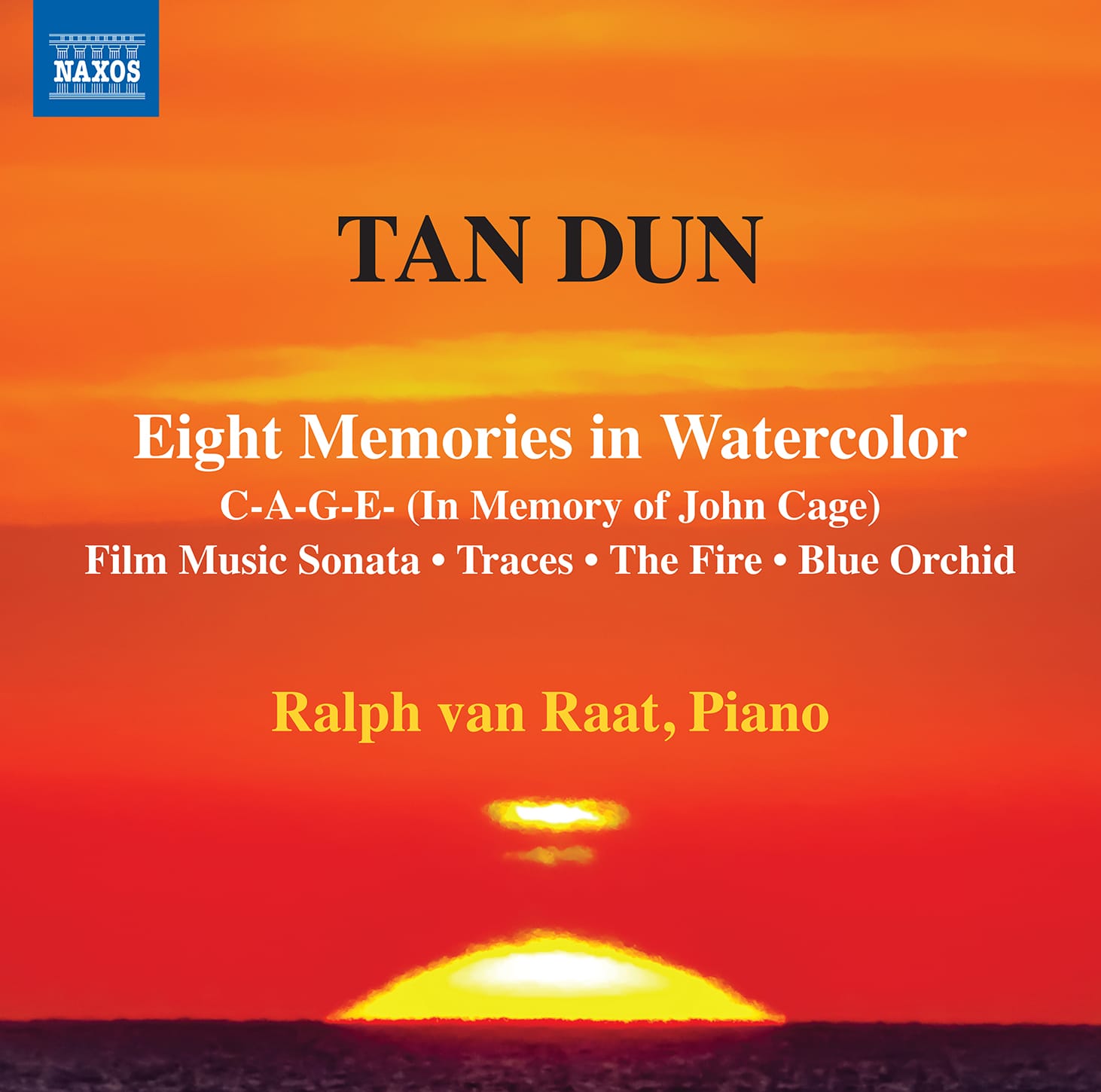Memories in Watercolour: the Piano Music of Tan Dun
A superb disc - fervently recommended!

The music of Tan Dun saddles China and the West with ease. No surprise that his Eight Memories in Watercolour exude Impressionism, but instead of Western chinoiserie, their starting point is in fact the Orient itself. I encountered them back in 2002, when Lang Lang (then not quite the superstar he is now!) played them at Wigmore Hall. Dun takes music from his naive Hunan as part fo the work's materials - the piece was composed while still a student (in 1978) and is a hymn of praise to his roots (it is heard here in a 2002 revision).
No. 2, “Staccato Beans” is heard in a most playful performance here by Ralph van Raat:
The titles are in English: intriguingly the fourth is called “Blue Nun” and it is difficult not to think of a certain type of cheap wine that used to be drunk by students! The most touching piece is “Ancient Burial,” the sixth:
As a rather nice bonus, here's a selection of them played at Bimhuis by van Raat:
The piece C-A-G-E- In Memory of John Cage (1993) uses a prepared piano in homage of the great master. The link is clear: from a Western perspective, Cage worked with Eastern philosophies (particularly in the I Ching) and so there is a nice symmetry between the two. The piece complies almost exclusively the four pitch classes of Cage's name (C, A, G, and E). The result does sound strikingly Oriental, yet Cageian at the same time. Unsurprisingly, silence is part of the equation here (think Cage's 4"33). It is absolutely fascinating, the pounded dissonances towards the end emerging as raw and powerful in Ralph van Raat's performance:
Dating from much more recently (2016), the Film Music Sonata (receiving its “first recording on general release”) takes inspiration for Tan Dun's music for the film The Banquet. This is in many senses the polar opposite to the Cage piece; try the positively dreamy “The Mask”:
If “After Twilight” uses repetition in a decidedly filmic way, there is a lovely sense of rhythmic spring - expect the unexpected - in “Sword Dance”:
The set ends with a love song, “Only for Love,” beautifully performed by van Raat.
The final three pieces form a sort of triptych. First, Traces (1989, revised 1992), which links back to the Cage piece in its use of silence and yet also evokes Nature. As the composer himself explains:
Once I was riding in a bus through the mountains in south China on a cold day. The windows were closed, but one near me had a little gap. The wind was whistling in, and I noticed it was singing A - C - D, those three notes. Sometimes it would disappear, but always return. I discovered that in between this appearing and disappearing. I was able to notice much more clearly the sounds of river, road, trees, and my own breath. Afterwards, I began to find this A - C - D singing everywhere, in birds, in folk music and language of many cultures. So in Traces I used A - C - D as the only pitch materials, and wrote many rests in which to hear clearly the sounds of the natural environment and of yourself. Doesn't this sound like Cage? Two thousand years ago, the Chinese philosopher Lao Tse said that the greatest sound can be heard only in silence. I think so too.
The Fire (2020) was written for the present performer, Ralph van Raat, and appears here in its World premiere recording. It is an extended piece (over 12 minutes) and includes a whole gamut of expression, from filmic passages of great tenderness (and beautifully played by van Raat) to avant-garde techniques such as forearm clusters and moments of almost Lisztian grandeur and virtuosity. There remains, though, an overarching sense of beauty:
Much shorter is Blue Orchid (Variation on Beethoven's “Diabelli Variations,” 2020). Written for Rudolf Buchbinder's Diabelli Project, part of the 250th anniversary celebrations for Beethoven in 2020, the piece presents Tan Dun and Beethoven in dialogue:
The booklet notes are by van Raat and are fascinating; as is his playing of these beautiful, varied piece; the recording, in Amsterdam's Muziekgbouw, is excellent. . Very much recommended.
You can buy this disc from Amazon at this link.
